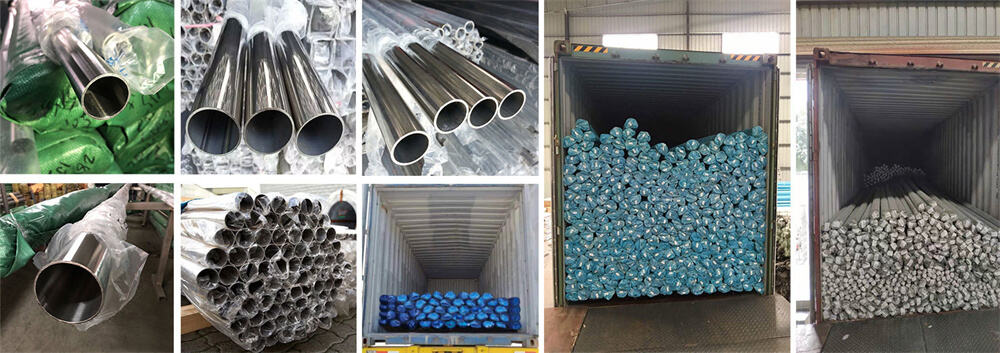Stainless steel is one of the indispensable and important materials in modern life and is widely used because of its excellent corrosion resistance, mechanical properties and processability. When choosing stainless steel materials, magnetic versus non-magnetic properties become a key differentiator. There are significant differences between magnetic stainless steel and non-magnetic stainless steel in terms of composition, structure, properties and applications. This article will elaborate on the differences between these two types of stainless steel from multiple perspectives.
Definition Of Magnetic And Non-Magnetic Stainless Steel:
Magnetic stainless steel: Magnetic stainless steel mainly refers to ferrite and martensitic stainless steel. They contain a high proportion of iron, are paramagnetic or weakly magnetic, and can be magnetized under an applied magnetic field.
Non-magnetic stainless steel: Non-magnetic stainless steel is mainly austenitic stainless steel. Due to its special crystal structure (face-centered cubic), it basically does not exhibit magnetism at room temperature, but weak magnetism may appear after cold working or high temperature treatment. (Due to cold working or high temperature treatment, part of the austenite may be transformed into martensite, thus introducing slight magnetism).
Common Classifications Of Stainless Steel:
According to the metallographic structure, stainless steel is divided into the following categories:
 Austenitic stainless steel:
Austenitic stainless steel:
- Features: Mainly austenite structure, with face-centered cubic crystal structure (FCC).
- Magnetism: Non-magnetic at room temperature, slight magnetism may appear after cold processing.
- Representative grades: 304, 316, 321.
- Application: chemical equipment, food processing equipment, medical equipment, etc.
 Ferritic stainless steel:
Ferritic stainless steel:
- Features: Mainly ferrite structure, with body-centered cubic crystal structure (BCC).
- Magnetism: It exhibits magnetism at room temperature.
- Representative grades: 430, 409, 439.
- Applications: architectural decoration, electrical components, automobile exhaust systems.
 Martensitic stainless steel:
Martensitic stainless steel:
- Features: The martensitic structure is obtained through heat treatment and has high strength and hardness.
- Magnetism: shows strong magnetism.
- Representative grades: 410, 420, 440C.
- Applications: Knives, turbine blades, medical surgical tools.
What Is The Difference Between Magnetic And Non-Magnetic Stainless Steel?
1.Chemical Composition:
The alloy composition of magnetic stainless steel is different from that of non-magnetic stainless steel.
|
Element
|
Magnetic Stainless Steel
|
Non-Magnetic Stainless Steel
|
|
Cr
|
12%-30%
|
16%-26%
|
|
Ni
|
Barely present in ferritic; low in martensitic
|
6%-22%
|
|
Fe
|
Main component
|
Main component
|
|
C
|
0.1%-0.2%
|
≤0.08%
|
|
Others
|
Mo, Si
|
Mo,N
|
2. Performance difference:
 Magnetic stainless steel:
Magnetic stainless steel:
a). Magnetism: It shows obvious magnetism under an external magnetic field, and the magnetic intensity of ferrite and martensite types is different.
b). Corrosion resistance: The corrosion resistance of ferritic stainless steel is worse than that of martensitic stainless steel, but not as good as austenitic stainless steel.
c). Hardness and strength: Martensitic stainless steel has high strength and hardness.
d). Welding performance: The welding performance is poor and special treatment is required after welding to avoid embrittlement or reduce corrosion resistance.
 Non-magnetic stainless steel:
Non-magnetic stainless steel:
a). Magnetism: Basically non-magnetic at room temperature, cold working or high temperature processing may cause weak magnetism.
b). Corrosion resistance: Excellent corrosion resistance.
c). Hardness and strength: Low hardness, but good toughness.
d). Welding performance: Excellent welding performance, suitable for manufacturing complex components.
How To Identify?
1). Magnetic test
Use a magnet to test. The one with strong adsorption force is magnetic stainless steel, and the one with weak or no adsorption force is non-magnetic stainless steel.
2).Chemical composition analysis
Detection of major alloying elements such as nickel and chromium to determine material type.
3). Metallographic analysis
Observe the metallographic structure through a microscope to confirm whether it is austenite, ferrite or martensite.

Magnetic stainless steel and non-magnetic stainless steel have their own characteristics. We can choose the appropriate stainless steel material according to the specific use environment and performance requirements.
We are a professional steel manufacturer. If you have any needs, you can contact us at any time!
 +86 17611015797 (WhatsApp )
+86 17611015797 (WhatsApp )  info@steelgroups.com
info@steelgroups.com
